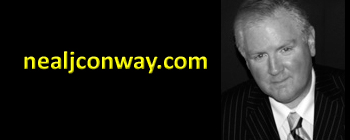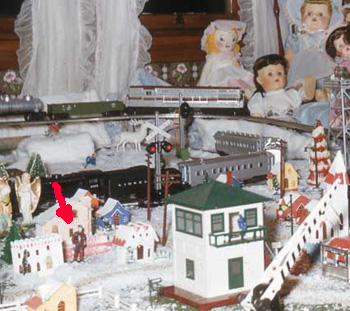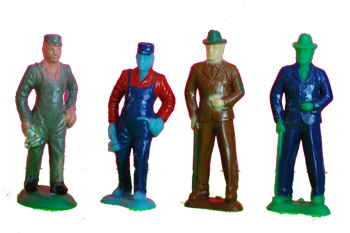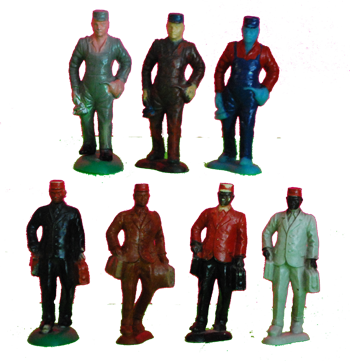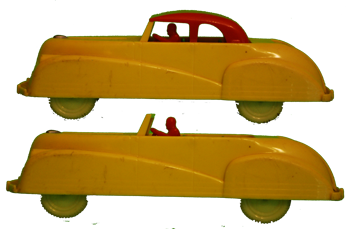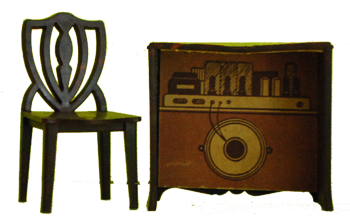TRAINS
When Plastic Was A Miracle:
Plasticville -- Beton -- Renwal
July 1, 2016
Before he became a filmmaker, Frank Capra wanted to be a chemical engineer. He knew about plastic which is why plastic is mentioned in Capra's film It's A Wonderful Life. Plastics are another opportunity that George Bailey passes on while his friend Sam Wainwright makes a fortune in plastic gun turret bubbles for WWII bombers. Viewers of It's A Wonderful Life in 1947 appreciated what Geoge Bailey missed out on. Plastic had become a miracle material used in making all kinds of things, including toys. By the 1950s, hundreds of toy companies were molding plastic products. This essay is about three that I'm familar with.
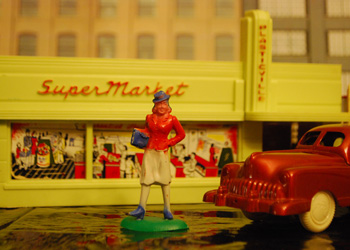
The Beton lady and her Renwal sedan at the Plasticville Supermarket. The great thing about these toys is that they embody the design and style of the 1940s and '50s.
Plasticville
Believe it or not, plastic was invented because of the simple hair comb. Hair combs were once made of tortoiseshell. Plastics were developed as a cheap and plentiful substitute for turtle armor. That is why some early plastic is mottled like tortoiseshell.
Established in 1833, Bachmann Brothers of Philadelphia was a maker of hair combs, so naturally the company adopted plastic as a material when it was invented.
Around 1950, when toy trains were at the height of their popularity, there were numerous companies that did not make trains but which made accessories for trains. Bachmann joined these by producing a plastic white picket fence that could be snapped together. The fence was a runaway seller at Christmas. Bright green plastic pine trees were added to the line, then a snap-together Cape Cod house. Plasticville was under development.
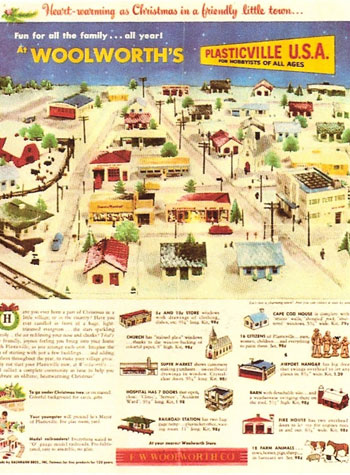
Plasticville's availability through popular "dimestores" such as Woolworth's in the 1950s ensured its wide distribution and current commonness as a collectible. Most items in this ad were 98 cents. The hospital was a whopping $1.98. Even today, vintage Plasticville, including items with no missing parts and in the original boxes, is plentiful and not very expensive.
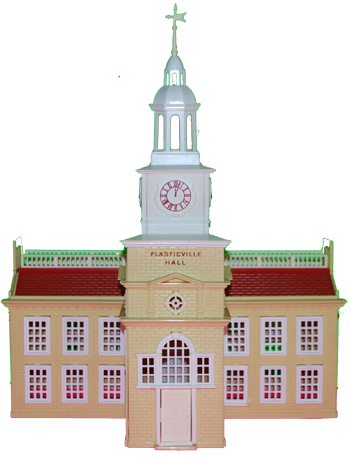
Plasticville's largest structure was the town hall. That it looks like Independence Hall is no surprise considering that the maker of Plasticville was located in Philadelphia. Plasticville's Chinese landlords currently offer the town hall in built-up form with red-brick walls.
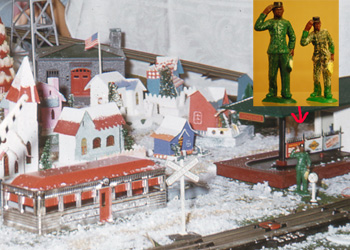
Not all the surplus plastic that Beton used was stable. The arrow indicating the green porter on my parents' layout that is now shrinking and shriveling, shown in the inset next to a "healthy" porter made from the same batch. In the foregrounnd is the Plasticville chrome-plated diner, a scarcer but still not very valuable, variation. At the rear is the gray police station, no doubt obtained because my father was a U.S. Capitol Policeman while he was going to law school.

